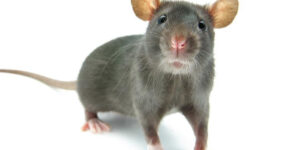Rats Mice Staten Island NY Pest Control Exterminator
Call 718 514 9874

Rats Mice Staten Island NY Pest Control Exterminator
We’re the leading providers of pest control exterminator services for rats mice in Staten Island NY
Please give us a call at 718 514 9874 in order to get started with the process.
A mouse, plural mice, is a small rodent characteristically having a pointed snout, small rounded ears, a body-length scaly tail, and a high breeding rate. The best known mouse species is the common house mouse (Mus musculus). It is also a popular pet. In some places, certain kinds of field mice are locally common. They are known to invade homes for food and shelter.
Species of mice are mostly classified in Rodentia, and are present throughout the order. Typical mice are classified in the genus Mus.
Mice are typically distinguished from rats by their size. Generally, when someone discovers a smaller muroid rodent, its common name includes the term mouse, while if it is larger, the name includes the term rat. Common terms rat and mouse are not taxonomically specific. Scientifically, the term mouse is not confined to members of Mus for example, but also applies to species from other genera such as the deer mouse, Peromyscus.
Domestic mice sold as pets often differ substantially in size from the common house mouse. This is attributable both to breeding and to different conditions in the wild. The best-known strain, the white lab mouse, has more uniform traits that are appropriate to its use in research.
Cats, wild dogs, foxes, birds of prey, snakes and even certain kinds of arthropods have been known to prey heavily upon mice. Nevertheless, because of its remarkable adaptability to almost any environment, the mouse is one of the most successful mammalian genera living on Earth today.
Mice, in certain contexts, can be considered vermin which are a major source of crop damage,[1] causing structural damage and spreading diseases through their parasites and feces.[2] In North America, breathing dust that has come in contact with mouse excrement has been linked to hantavirus, which may lead to hantavirus pulmonary syndrome (HPS).
Primarily nocturnal[3] animals, mice compensate for their poor eyesight with a keen sense of hearing, and rely especially on their sense of smell to locate food and avoid predators.[4]
Mice build long intricate burrows in the wild. These typically have long entrances and are equipped with escape tunnels or routes. In at least one species, the architectural design of a burrow is a genetic trait.[5]
Rats are various medium-sized, long-tailed rodents. Species of rats are found throughout the order Rodentia, but stereotypical rats are found in the genus Rattus. Other rat genera include Neotoma (pack rats), Bandicota (bandicoot rats) and Dipodomys (kangaroo rats).
Rats are typically distinguished from mice by their size. Generally, when someone discovers a large muroid rodent, its common name includes the term rat, while if it is smaller, its name includes the term mouse. The common terms rat and mouse are not taxonomically specific.
The best-known rat species are the black rat (Rattus rattus) and the brown rat (Rattus norvegicus). This group, generally known as the Old World rats or true rats, originated in Asia. Rats are bigger than most Old World mice, which are their relatives, but seldom weigh over 500 grams (1.1 lb) in the wild.[1]
The term rat is also used in the names of other small mammals that are not true rats.

